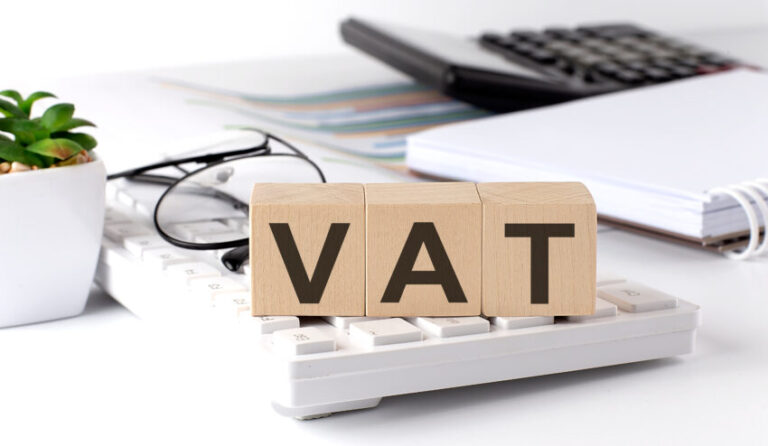Running a business in the UAE means meeting legal tax obligations. Yet, many companies struggle with VAT Registration & Return Filing due to unclear rules and tight deadlines. Missing these requirements can result in heavy fines, disrupt operations, and damage your business credibility. It’s not just about paying VAT—it’s about proper reporting, documentation, and compliance. The good news? With the right understanding of procedures and timelines, you can stay ahead of penalties and maintain smooth operations. This guide walks you through the full VAT registration process, return filing steps, and best practices to keep your business tax-compliant without unnecessary stress.
Understanding VAT in the UAE – The Basics You Must Know
VAT (Value Added Tax) is a consumption-based tax applied to most goods and services in the UAE at a standard rate of 5%. It is collected at each stage of the supply chain and finally borne by the end consumer. Businesses act as tax collectors on behalf of the Federal Tax Authority (FTA).
For example, if you sell a product for AED 100, you must add AED 5 as VAT, collect it from the buyer, and remit it to the FTA. This ensures that taxation is consistent and transparent. Understanding this framework is essential before starting VAT Registration & Return Filing, as compliance is not optional—it’s mandatory for eligible businesses.
Who Needs VAT Registration in the UAE?
The UAE VAT Law makes VAT registration mandatory for businesses crossing specific thresholds:
- Mandatory Registration: Annual taxable supplies and imports exceeding AED 375,000.
- Voluntary Registration: Businesses with annual supplies and imports above AED 187,500 can register voluntarily to claim input VAT.
Failing to register when required can result in administrative penalties starting from AED 10,000. Registration applies to both mainland and free zone businesses, and even companies outside the UAE may need to register if they supply taxable goods or services within the country.
Step-by-Step VAT Registration Process
Step 1 – Create an e-Services Account
Visit the FTA portal and create an e-Services account by providing your email and setting up a secure password.
Step 2 – Gather Required Documents
You will need:
- Trade license copy
- Passport/Emirates ID of owners or managers
- Bank account details
- Financial statements
- Customs details (if applicable)
Step 3 – Complete the VAT Registration Form
Fill in accurate business details, turnover, taxable supplies, and imports. Ensure no errors—incorrect data may delay approval.
Step 4 – Submit and Await FTA Approval
Once submitted, the FTA will review your application. Upon approval, you will receive a VAT registration certificate with your Tax Registration Number (TRN).
VAT Return Filing – What It Involves
VAT return filing means reporting your sales, purchases, and VAT collected/paid to the FTA. Most businesses file quarterly, but some file monthly based on their assigned tax period.
A standard VAT return form includes:
- Output VAT (sales)
- Input VAT (purchases)
- Net VAT payable or refundable
It must be submitted electronically through the FTA portal. The deadline is usually 28 days after the end of the tax period. Late filing results in penalties starting from AED 1,000 for the first offense and AED 2,000 for repeats within 24 months.
Common Mistakes in VAT Registration & Return Filing
- Missing registration deadlines
- Incorrect VAT calculation
- Failure to claim input VAT
- Late return submission
- Poor record-keeping
These mistakes can lead to financial loss and reputational damage. Proper planning and expert guidance are the keys to avoiding such issues.
Best Practices for Accurate VAT Compliance
- Keep detailed invoices and receipts
- Use accounting software with VAT features
- Reconcile sales and purchase data before filing
- Monitor FTA updates for rule changes
- Seek professional support for complex transactions
Why Professional Assistance Matters
While the FTA provides guidelines, interpreting and applying VAT rules can be challenging, especially for new businesses. A tax consultant ensures that VAT Registration & Return Filing is done correctly, deadlines are met, and claims are maximized. They also help respond to any FTA inquiries or audits.
Final Thoughts
Staying compliant with VAT Registration & Return Filing in the UAE is not just a legal requirement—it’s essential for maintaining business credibility and avoiding penalties. By understanding the process, keeping accurate records, and filing on time, you can manage VAT obligations smoothly. However, professional guidance can make the process faster, more accurate, and stress-free.
CTA: Ensure accurate VAT Registration & Return Filing for your UAE business with expert guidance from mhtaxationllc. Contact us today for professional taxation solutions that keep you fully compliant.


